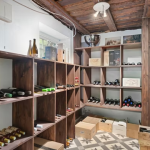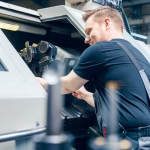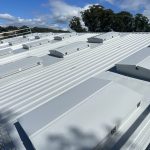Rebuilding Your Shed: What to Know Before You Start

A shed can be more than just a storage space; it can be a functional extension of your home or property. Whether you use it for tools, gardening equipment, hobbies, or as a small workshop, a well-built shed can make daily tasks easier and help keep your outdoor area organised. Over time, however, sheds can wear out from exposure to the elements, pests, or simple neglect. If your shed is starting to look worse for wear, rebuilding can be a rewarding project that adds value and convenience to your property.
Before you pick up a hammer, though, it’s worth understanding what’s involved. From selecting the right materials to managing waste and ensuring your design is structurally sound, a bit of planning can save you time, money, and frustration. Here’s what you should know before starting your shed rebuild.
Choosing the Right Materials
Choosing your building materials is one of the most important decisions you’ll make when rebuilding a shed. While there are plenty of options, timber remains one of the most popular for Australian sheds due to its natural appearance, durability, and ease of construction. Selecting a reliable timber supplier is essential to ensure the wood you purchase is treated against termites, resistant to moisture damage, and suited to your local climate conditions. High-quality timber can last decades if properly maintained, making it a wise investment for a structure you want to stand the test of time.
It’s also worth considering whether your shed will require a mix of materials. For instance, you might use steel for the roof, concrete for the base, and timber for the frame and walls. Blending materials can provide a balance of strength, aesthetics, and cost-effectiveness. Consider your shed’s purpose—whether it’s purely for storage or will need to handle heavier use—and choose materials accordingly. Planning these details early may help manage costly changes later.
Managing Waste and Site Preparation
Rebuilding a shed often means dealing with a surprising amount of debris. From dismantling the old structure to clearing the site for the new build, waste management is a crucial part of the process. Hiring skip bins is a convenient way to keep your worksite clean and free of obstruction. They allow you to dispose of old timber, rusted metal, and other materials in one go. This approach also ensures you adhere to local council regulations regarding disposal, which can vary from place to place in Australia.
The site must be properly prepared before the new shed goes up. Preparations include levelling the ground, laying a foundation, and checking for drainage issues that could cause water to pool around the base. A stable and well-prepared site not only makes construction easier but also extends the life of your shed by protecting it from moisture damage and structural shifting. Taking the time to clear away old materials, weeds, and debris before starting work will give you a clean slate for the new build.
Ensuring Structural Integrity
Rebuilding a shed is not just about making it look good; it must also be safe and sturdy. This is especially true if your shed will store heavy equipment or be used as a workspace. Engaging a reputable truss manufacturer can help ensure that your shed’s roof and frame are strong enough to withstand local weather conditions, including high winds and heavy rain. Trusses are the backbone of your shed’s roof, providing the support needed to keep the structure stable and secure over time.
Good design goes hand in hand with solid construction. Think about factors such as roof pitch, ventilation, and access points. Will you need wide doors to move large equipment? Should you add windows for natural light? A well-thought-out design will make your shed not only practical but also more enjoyable to use. Safety should always be a priority, so ensure all load-bearing elements are constructed to code and the finished shed is adequately anchored to the ground.
Conclusion
Rebuilding your shed is a chance to create something that perfectly suits your needs and meets the demands of everyday use. By carefully choosing materials, managing waste effectively, and ensuring your structure is built to last, you can enjoy a shed that looks great, functions well, and adds value to your property. With the proper preparation and attention to detail, the project can be both satisfying and long-lasting—transforming a tired old structure into a reliable, attractive part of your outdoor space.






























